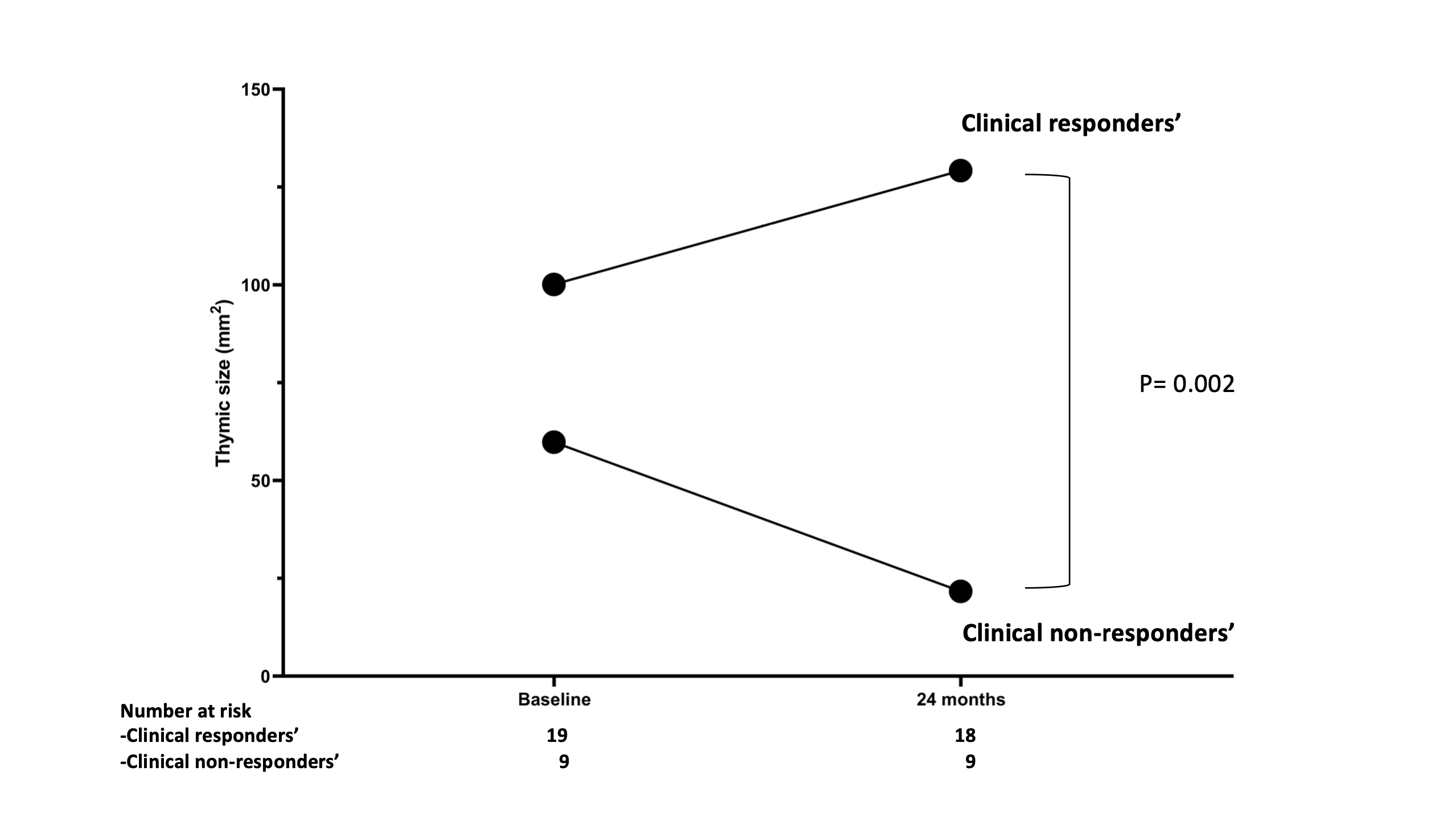Session Information
Session Type: Poster Session C
Session Time: 10:30AM-12:30PM
Background/Purpose: The thymus is a central lymphatic organ responsible for T-cell differentiation and maturation throughout life. The thymus reaches its maximum absolute weight at puberty, and thymic involution then begins, with fatty infiltration of the gland. Incomplete thymus involution is observed in 12 to 15% of systemic scleroderma (SSc) patients and Meunier et al. reported an association between SSc-related interstitial lung disease and incomplete thymus involution. However, few data exist on thymic evolution after resetting the “immunologic clock” by autologous stem cell transplantation (aHSCT) in early diffuse cutaneous systemic scleroderma. The aim of this study was, therefore, to evaluate thymic involution frequency in SSc patients who underwent aHSCT and thymic size longitudinal changes on chest high-resolution computed tomography (HRCT) after transplant.
Methods: Chest HRCT evaluation was performed before aHSCT and afterwards during yearly routine clinical and paraclinical follow-up in 33 consecutive dcSSc-patients between January 2000 and January 2016. Two independent chest radiologist experts blindly assessed the thymus. Patients were retrospectively classified as clinical responders or clinical non-responders according to: at least 25% improvement in mRSS and/or 10% improvement in FVC or carbon monoxide diffusing lung capacity as compared with baseline, and without need for additional immunosuppression within the 24 months after transplant.
Results: Altogether we evaluated 33 SSc patients (20 female, 13 male) with a mean age at transplantation of 45.5 ±13.5 years and a disease duration of 28.0 ±17.7 months. 27.3% (n=9) of the evaluated patients showed incomplete involution of the thymus at baseline. At 24 months after aHSCT, significant enlargement of thymus tissue were observed as compared with before aHSCT (p=0.001). Among the 24 patients with complete involution of the thymus at baseline two of them grows after transplant.
Nineteen patients were clinical responders at 2 years (probability of response 0.68, 95% CI (0.49;0.82). All the patients with an increase in thymic size were in the clinical responders group. The mean absolute change from baseline in thymic size at month 24 was +23.6 mm2 in the clinical responders group and −38.1 mm2 in the clinical non-responders group (p=0.002) (see figure 1).
Conclusion: Real-world data show a significant thymic size increase within two years after aHSCT for early diffuse cutaneous systemic scleroderma which is associated with clinical response.
To cite this abstract in AMA style:
Pugnet G, Collot S, Petermann A, Lansiaux P, Larion G, Resche-rigon M, Borel C, Marjanovic Z, Farge D. Thymic Size Longitudinal Changes on Chest High-resolution Computed Tomography After Autologous Hematopoietic Stem Cell Transplantation for Diffuse Cutaneous Systemic Sclerosis [abstract]. Arthritis Rheumatol. 2024; 76 (suppl 9). https://acrabstracts.org/abstract/thymic-size-longitudinal-changes-on-chest-high-resolution-computed-tomography-after-autologous-hematopoietic-stem-cell-transplantation-for-diffuse-cutaneous-systemic-sclerosis/. Accessed .« Back to ACR Convergence 2024
ACR Meeting Abstracts - https://acrabstracts.org/abstract/thymic-size-longitudinal-changes-on-chest-high-resolution-computed-tomography-after-autologous-hematopoietic-stem-cell-transplantation-for-diffuse-cutaneous-systemic-sclerosis/

